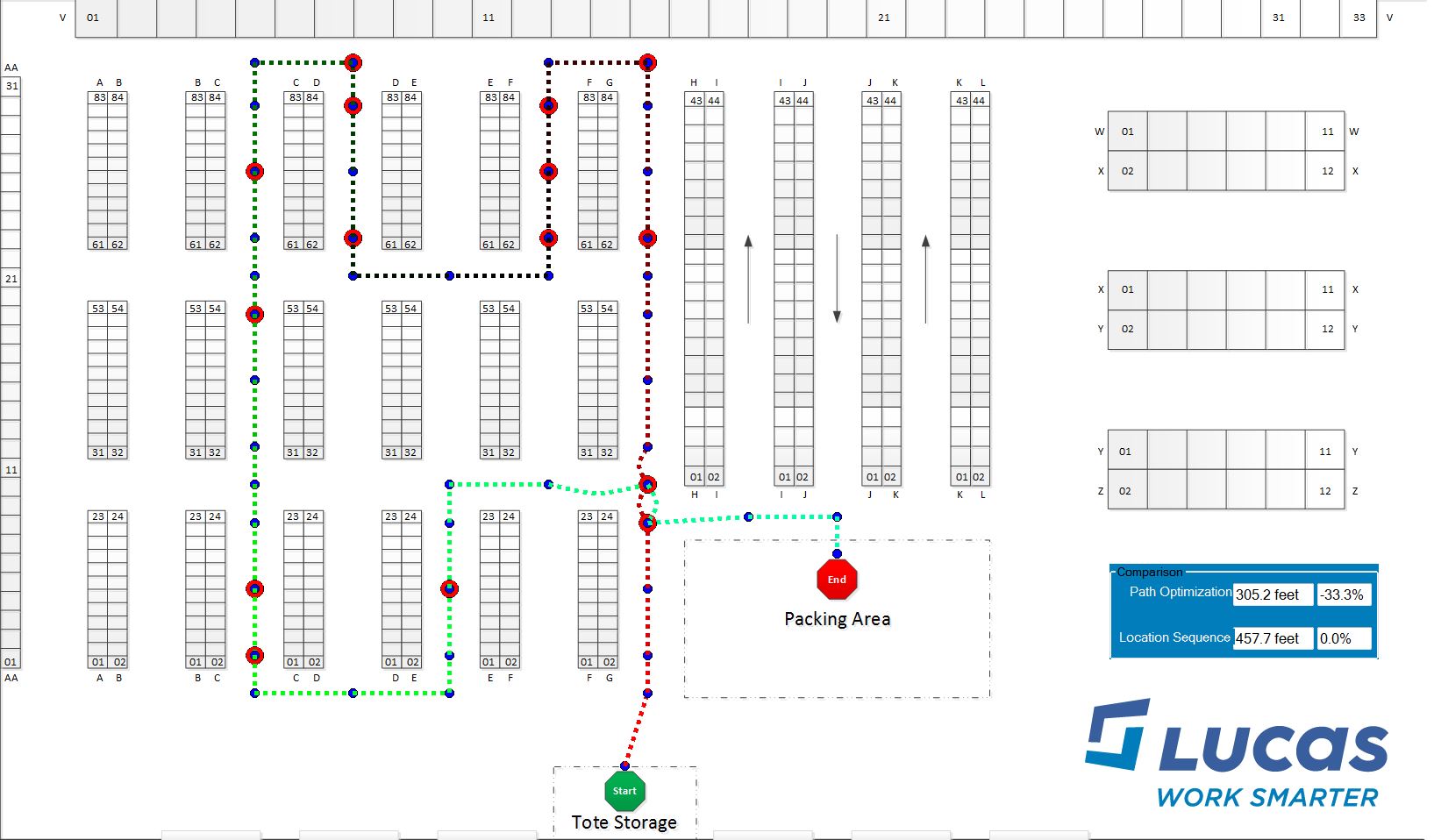It’s common knowledge that one of the highest costs in a DC is labor, and that the most labor time is spent on picking. But what is often overlooked is that the majority of picking time is spent on travel. Therefore, the key to reducing labor costs in your DC is to focus on reducing pickers’ travel time.
The need to reduce picking time is the driving force behind many DCs’ investments in WMS upgrades, voice-directed picking, and other solutions that can reduce the time your pickers spend at the pick face. For example, many Tier One WMS systems offer a voice picking add-on to make your pickers hands- and eyes-free, which means they’ll spend less time wielding a scanner or looking at a screen. These time savings at the pick face are very real and very attractive. The problem is that these incremental process improvements do not impact the activity that accounts for up to 70% of pickers’ time – travel.
There’s a huge opportunity for travel time savings in most companies’ distribution operations. Money is being left on the table, but it is well within reach. Lucas has introduced an innovative approach to attack the travel challenge while also minimizing time at the pick face, all while working in concert with a WMS or ERP.
Reduce Travel with AI-Based Optimization
Our two-pronged approach is incorporated in our new AI-based travel optimization module. Lucas travel optimization increases pick density through intelligent assignment creation/batching, and defines a better path to travel than the default, location sequence order that most WMS use.
While this may sound simple (and it is for users), the sheer number of factors involved in each decision means the tool must use complex mathematical modeling and algorithms that have been vetted by operations experts.
For example, batching orders together intelligently means more than just putting together orders that fall within the same zones. For an operation to run efficiently, the batching algorithm must also take into account factors like cart capacity, user permissions, and order priority or shipping deadlines.
Similarly, the ideal travel path calculation is not a simple measure of distance, but must also factor in variables like the cost (in time) of turning around a cart or jack, directional aisle restrictions, and zone sequencing. Furthermore, this travel path must be used to calculate the optimized batch in the first place.
Together, the batch optimization and path optimization performed by Lucas can reduce travel time by 30-70%! While the calculations used to achieve this reduced travel time may be complex, the equation of how this will save you money is simple. Less travel time equals less labor. Less labor equals less labor costs.
To start a conversation about how our new travel optimization tool might help you minimize labor costs and to see a personalized demo, send us a message or view our demo on-demand.






